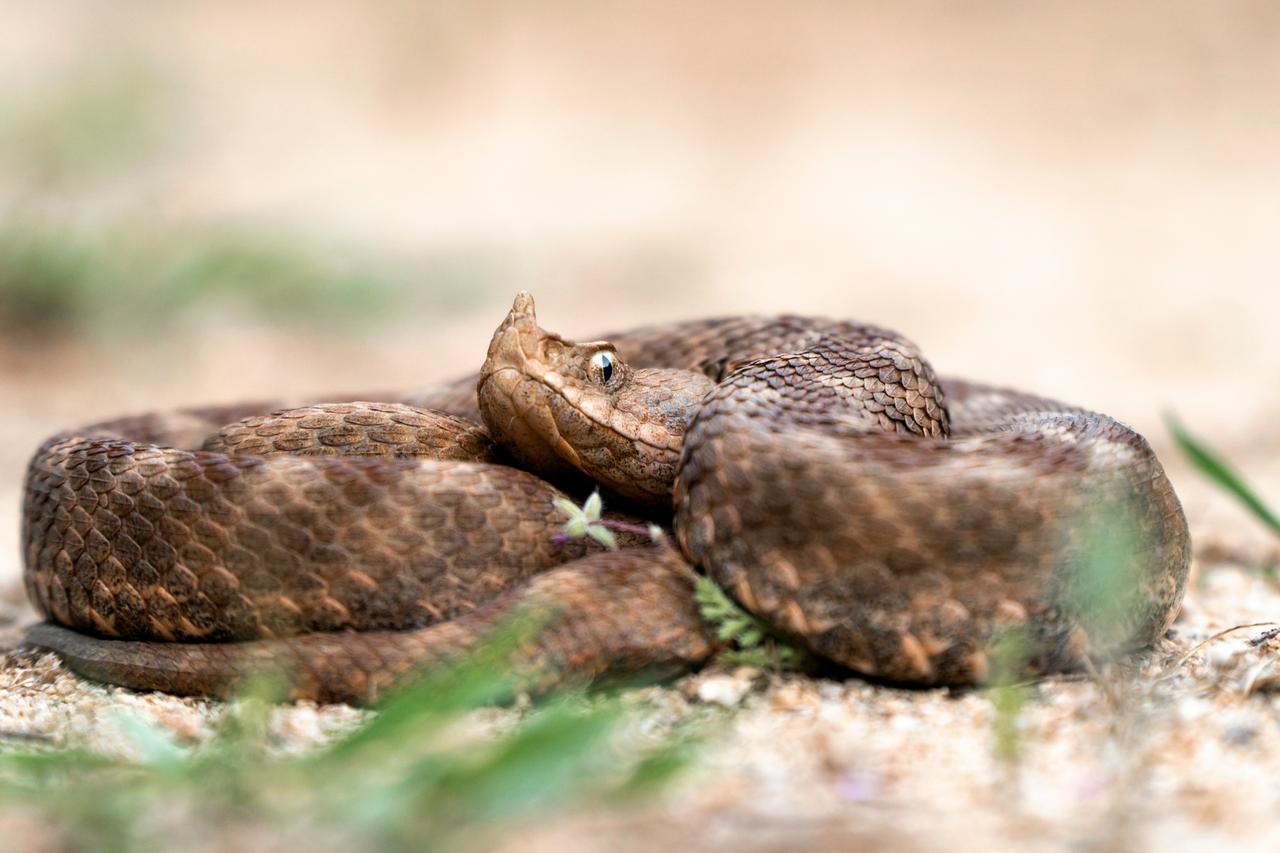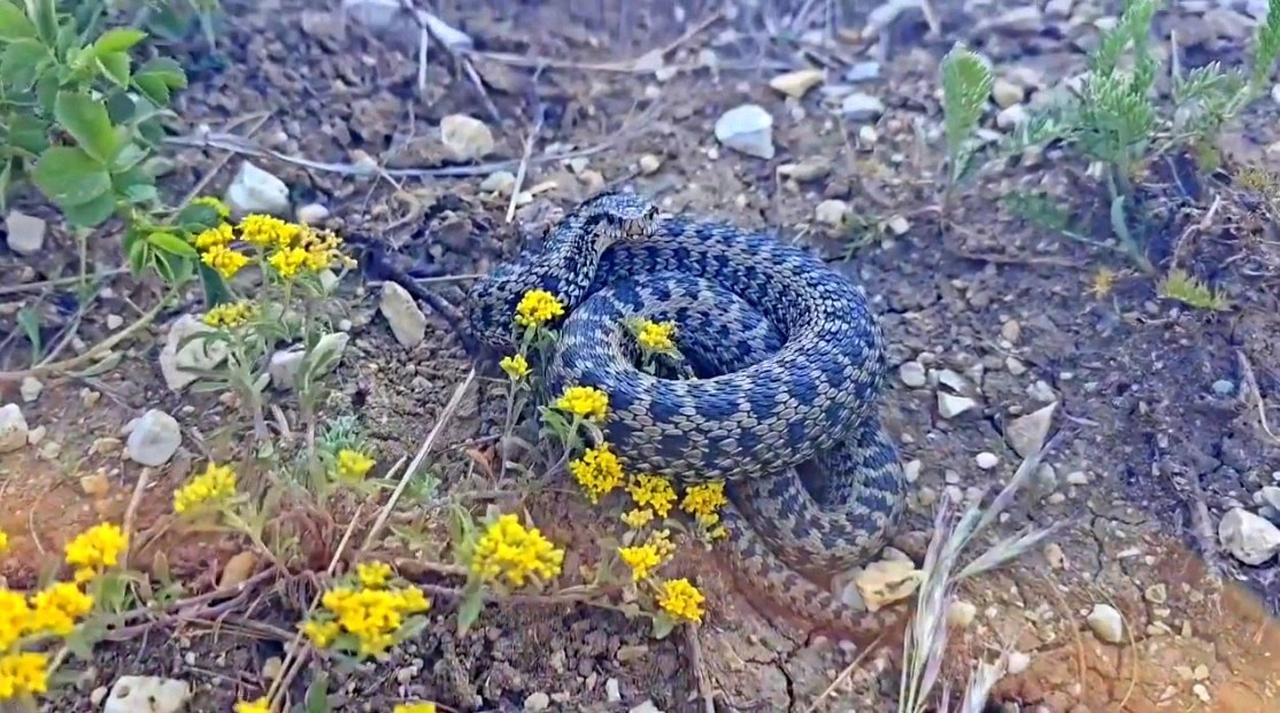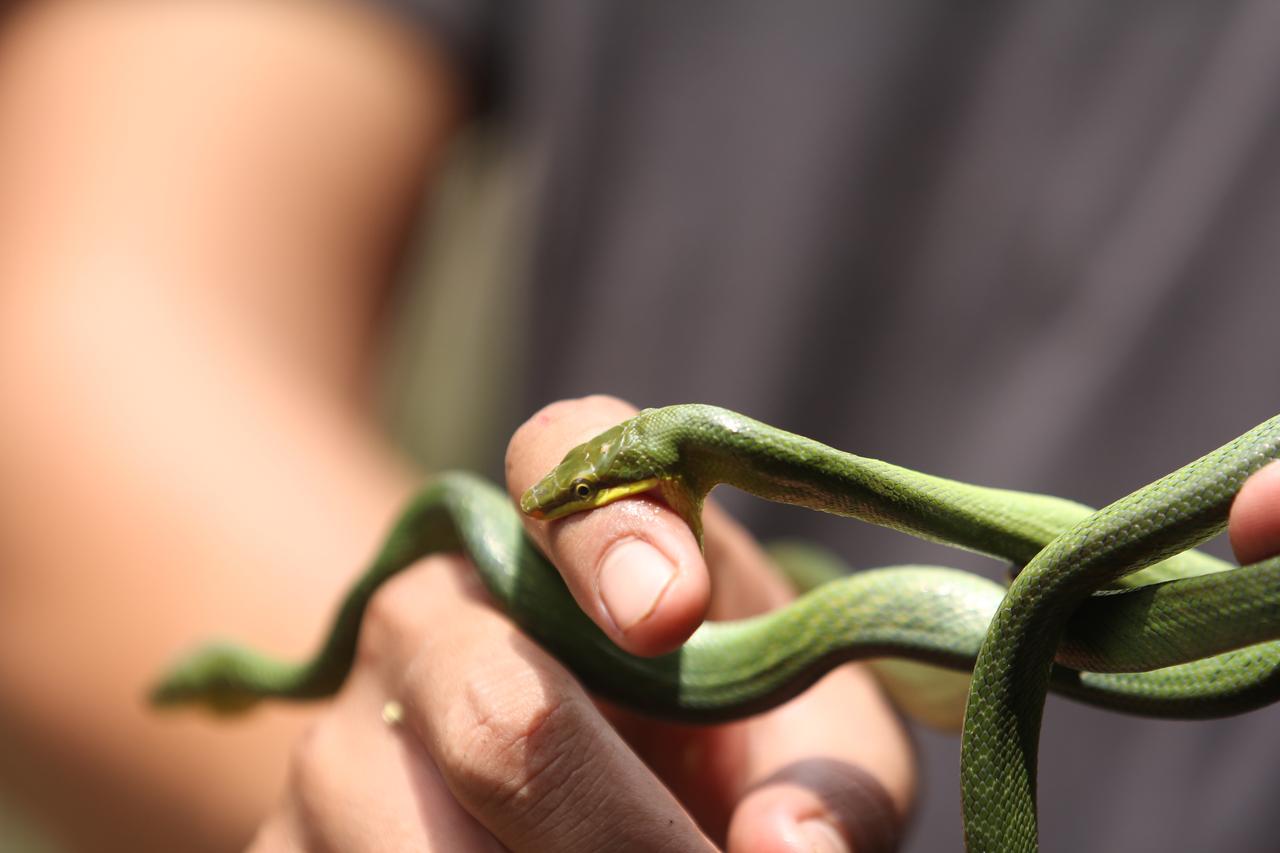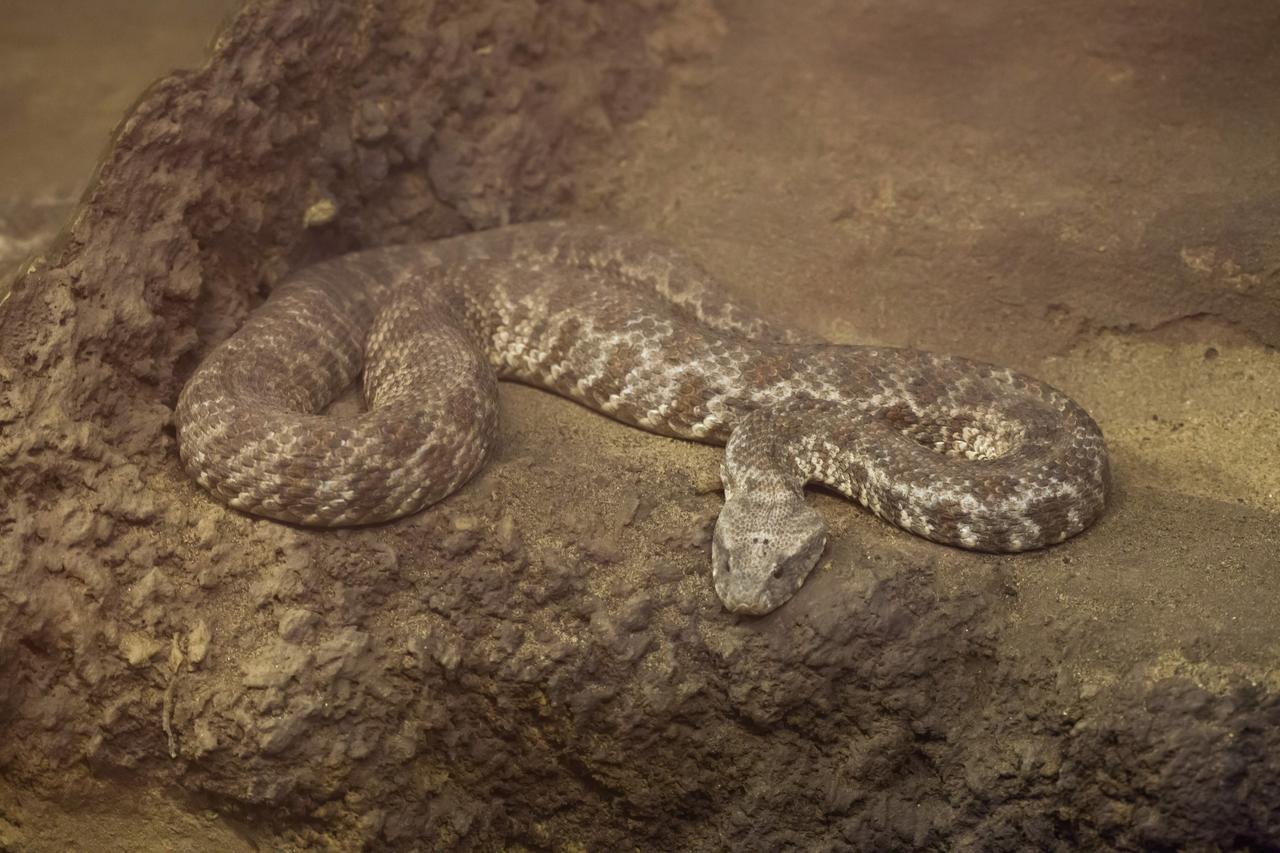
A herder in the eastern province of Erzincan recently captured video footage of a large blunt-nosed viper, one of the most venomous snakes in Türkiye.
The snake appeared in the highlands of Cilhoroz village in the district of Cayirli. It was seen briefly by shepherd Mert Yilmaz before disappearing into the rocky landscape.
The koca engerek, or Macrovipera lebetina, can grow up to 1.5 meters in length and is responsible for some of the most serious bite cases in rural areas. While viper activity tends to rise in the summer months, wildlife experts say most snakes avoid human contact unless provoked.
Still, recent sightings and rare fatal incidents have renewed interest in understanding which species pose a real risk and how to stay safe when visiting Türkiye.

Türkiye is home to 59 snake species, 17 of which are venomous.
The majority of dangerous species belong to the Viperidae family and are found in a range of habitats, from high-altitude forests to Mediterranean farmland and arid steppe.
According to biologist Mehmet Tural of WWF Türkiye, who spoke to Independent Türkiye, these snakes can be encountered anywhere between sea level and 2,400 meters.
The most widespread and dangerous species of snakes in Türkiye include:
Venomous snakes tend to have triangular heads, elliptical pupils, and thick, patterned bodies.
“In most cases, the difference between a dangerous and harmless snake isn’t obvious to the untrained eye,” explained Prof. Dr. Mehmet Zulfu Yildiz to Hurriyet. He advised never to assume a snake is safe based on appearance alone.

Encounters with snakes are more common during warm months, especially in rural and mountainous areas.
According to Dr. Veysel Balci, an emergency medicine specialist, most bites occur when the snake is startled. “If you step too close or try to hit it, the snake may perceive you as a threat and bite,” he told Hurriyet.
If you are bitten by a snake in Türkiye:
“Trying to extract the venom by cutting or sucking, as seen in movies, is extremely dangerous,” said Dr. Balci. “It can worsen the injury or even poison the person giving aid.”
Türkiye’s hospitals carry polyvalent antivenoms that are effective against most viper species. If a bite occurs in a remote location, health teams can arrange fast transport of antivenom from regional centers.
Sharing a photo of the snake, if safe to do so, can also help doctors identify the correct treatment.
Yildiz added that in case of a suspected bite, symptoms such as intense burning pain, swelling, dizziness, or black-and-blue bruising near the wound may suggest venom was injected. “Even if the bite seems minor, the victim must be monitored by a medical team,” he said.

Despite widespread fear, most snakes in Türkiye are harmless and ecologically important. They help control rodent populations and reduce the spread of disease.
Dr. Ergun Bacak from Istanbul University emphasized that snakes should not be killed, even if they enter urban areas. “Call the fire department or local wildlife authorities,” he said to Hurriyet. “They will safely relocate the animal.”
In the wild, simple precautions can help avoid conflict:
“Snakes usually hear you coming and will escape before you even notice them,” said Bacak. But he also warned that during July and August, heat may force snakes into cooler urban spaces, increasing chances of contact.
According to the World Health Organization, around 5 million snake bites occur globally each year. Between 81,000 and 138,000 result in death. In Türkiye, although deaths are rare, severe injuries, including limb loss, are still reported, often due to delayed treatment or harmful first-aid practices.
Remember the golden rule. As Professor Yildiz put it, “If you leave the snake alone, it will leave you alone.” So, if you see a snake, keep your distance and let it move away.